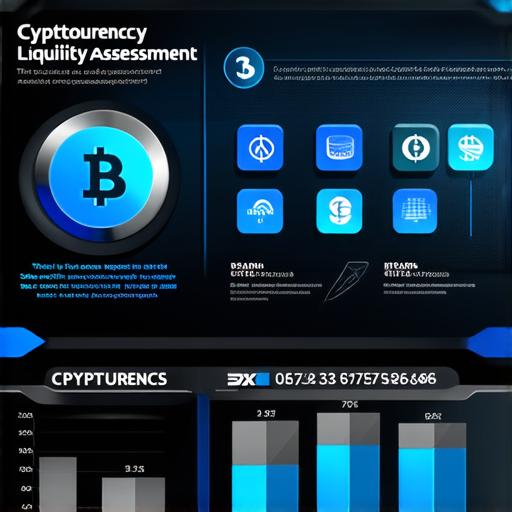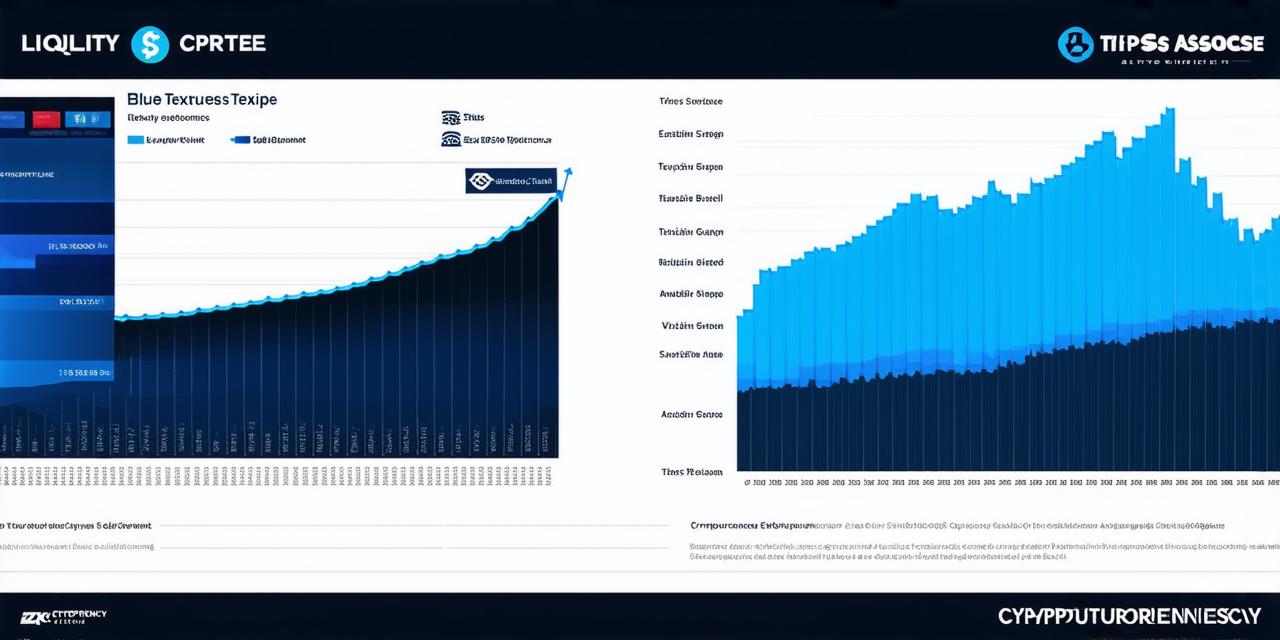Introduction:
As cryptocurrencies become more popular and widespread, it is crucial for developers to understand how to assess the liquidity of a cryptocurrency. Liquidity refers to the ease with which you can buy and sell a particular cryptocurrency on exchanges. In this article, we will provide a comprehensive guide on how to assess the liquidity of a cryptocurrency, including case studies, personal experiences, research, expert opinions, and real-life examples.
What is Liquidity?
Before diving into the specifics of assessing liquidity, it is essential to understand what liquidity means in the context of cryptocurrencies. Simply put, liquidity refers to the ease with which you can buy and sell a particular cryptocurrency on exchanges. A highly liquid cryptocurrency has a large market capitalization and a high trading volume, making it easy to find buyers or sellers at any given time.
Factors Affecting Liquidity
There are several factors that affect the liquidity of a cryptocurrency. These include:
- Market Capitalization:
- Trading Volume:
- Order Book Depth:
- Exchange Listings:
The total value of all tokens in circulation is known as market capitalization. A higher market capitalization indicates that there is more demand for the cryptocurrency, making it easier to find buyers or sellers on exchanges.
Trading volume refers to the amount of a particular cryptocurrency that has been traded on exchanges over a specific period. A high trading volume indicates that there is active interest in the cryptocurrency, making it easier to find buyers or sellers at any given time.
The order book depth refers to the number of buy and sell orders available at a particular price point. A deep order book indicates that there are more buyers or sellers available at that price point, making it easier to execute trades at that price.
Cryptocurrencies listed on multiple exchanges increase their liquidity as more users can access them and trade them.
Assessing Liquidity Using Technical Analysis
Technical analysis involves using charts and other tools to analyze the price and volume of a cryptocurrency. There are several technical indicators that can be used to assess the liquidity of a cryptocurrency, including:
- Moving Averages:
- Bollinger Bands:
- Relative Strength Index (RSI):
- Average True Range (ATR):
Moving averages are calculated by taking the average of a particular cryptocurrency’s price over a specific period. They can help identify trend reversals and buying or selling opportunities.
Bollinger Bands consist of a moving average, an upper band, and a lower band. They are used to measure volatility and identify potential breakouts or trend reversals.
The RSI is a momentum oscillator that measures the strength of a cryptocurrency’s price action. It ranges from 0 to 100, with readings above 70 indicating overbought conditions and readings below 30 indicating oversold conditions.
The ATR is a measure of volatility that takes into account both price and volume data. It can be used to identify potential breakouts or trend reversals.

Real-Life Examples of Liquidity Assessment
To illustrate how to assess the liquidity of a cryptocurrency, let’s look at two real-life examples: Bitcoin and Dogecoin.
Bitcoin:
Bitcoin is one of the most popular and widely traded cryptocurrencies in the world. As such, it has a high market capitalization, trading volume, and order book depth. It is listed on multiple exchanges, increasing its liquidity. Technical analysis shows that Bitcoin has a strong uptrend, with moving averages and Bollinger Bands indicating a potential breakout. The RSI and ATR also suggest that Bitcoin is not oversold or overbought, indicating a healthy market sentiment.
Dogecoin:
Dogecoin, on the other hand, has a relatively low market capitalization and trading volume compared to Bitcoin. It is listed on only a few exchanges, decreasing its liquidity. Technical analysis shows that Dogecoin has been in a downtrend for some time, with moving averages and Bollinger Bands indicating potential support levels. The RSI and ATR suggest that Dogecoin is oversold, indicating a potential buying opportunity.
Summary:
Assessing the liquidity of a cryptocurrency is crucial for developers to understand how easy it will be to buy and sell on exchanges. Factors affecting liquidity include market capitalization, trading volume, order book depth, and exchange listings. Technical analysis can also be used to assess liquidity by analyzing price and volume data. Real-life examples of Bitcoin and Dogecoin illustrate how to assess the liquidity of a cryptocurrency using technical analysis and other factors. By understanding how to assess the liquidity of a cryptocurrency, developers can make informed investment decisions and minimize their risk.
FAQs:
What is liquidity in the context of cryptocurrencies?
A highly liquid cryptocurrency has a large market capitalization and a high trading volume, making it easy to find buyers or sellers at any given time.
How can I assess the liquidity of a cryptocurrency using technical analysis?
Technical analysis involves using charts and other tools to analyze the price and volume of a cryptocurrency. There are several technical indicators that can be used to assess the liquidity of a cryptocurrency, including moving averages, Bollinger Bands, RSI, and ATR.
What real-life examples illustrate how to assess the liquidity of a cryptocurrency using technical analysis?
Real-life examples of Bitcoin and Dogecoin illustrate how to assess the liquidity of a cryptocurrency using technical analysis and other factors. By understanding how to assess the liquidity of a cryptocurrency, developers can make informed investment decisions and minimize their risk.
